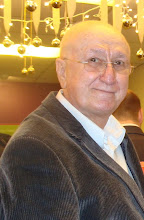 According to today's edition of the New York Times:
According to today's edition of the New York Times:CHICAGO — Regional government agencies around the Great Lakes spend some $15 billion a year to protect the lakes from invasive species, contaminated sediment and sewage overflows, a new study shows. But local officials say that still more protection is needed and that the United States and Canadian governments should pay for it.
“They’re saying it’s not a federal problem, but it is,” Mayor Richard M. Daley of Chicago said of the five lakes, which hold 20 percent of the world’s fresh water. Mr. Daley and other regional leaders say they intend to press for more federal money in light of the study, to be released Wednesday, which for the first time estimates what local governments are devoting to the lakes.
Several mayors said the lakes should not be deemed merely local concerns, but seen as a broader issue, akin to assisting the New Orleans region after Hurricane Katrina or restoring the Everglades in Florida. The study, arranged by the Great Lakes Commission and the Great Lakes and St. Lawrence Cities Initiative, both advocacy groups, concluded that the 688 local governments in the Great Lakes and St. Lawrence River region spend much of the money on aging wastewater systems, which can release sewage when overwhelmed with rain. The $15 billion estimate was based on responses by 143 of the local governments to a survey on their spending in 2006.
It is uncertain exactly what federal authorities in the United States and Canada now spend on the Great Lakes, in part because so many agencies and programs are tied to the lakes. “That is one of the problems; we can’t find out what’s being spent,” said David Ullrich, executive director of the Great Lakes and St. Lawrence Cities Initiative.
No one was available on Tuesday at the United States Environmental Protection Agency to answer questions about Great Lakes spending. But Dale Kemery, a spokesman for the agency, wrote in an e-mail message that its budget provided “significant funding” for wastewater infrastructure nationally.
“We’re doing more with less by advancing innovative technologies and growing greater partnerships for sustainability,” Mr. Kemery wrote.
Still, Mr. Ullrich pointed to a main federal fund — one that helps states with wastewater projects — as an example of shrinking federal money that he said would leave the Great Lakes in jeopardy: the Clean Water State Revolving Fund dropped to $689 million in the 2008 fiscal year, from $1.08 billion a year earlier.
“The same problem can be seen here,” David Miller, the mayor of Toronto, said of Canada’s federal financing. “The national government doesn’t seem to understand the urgency and importance of the Great Lakes.”



